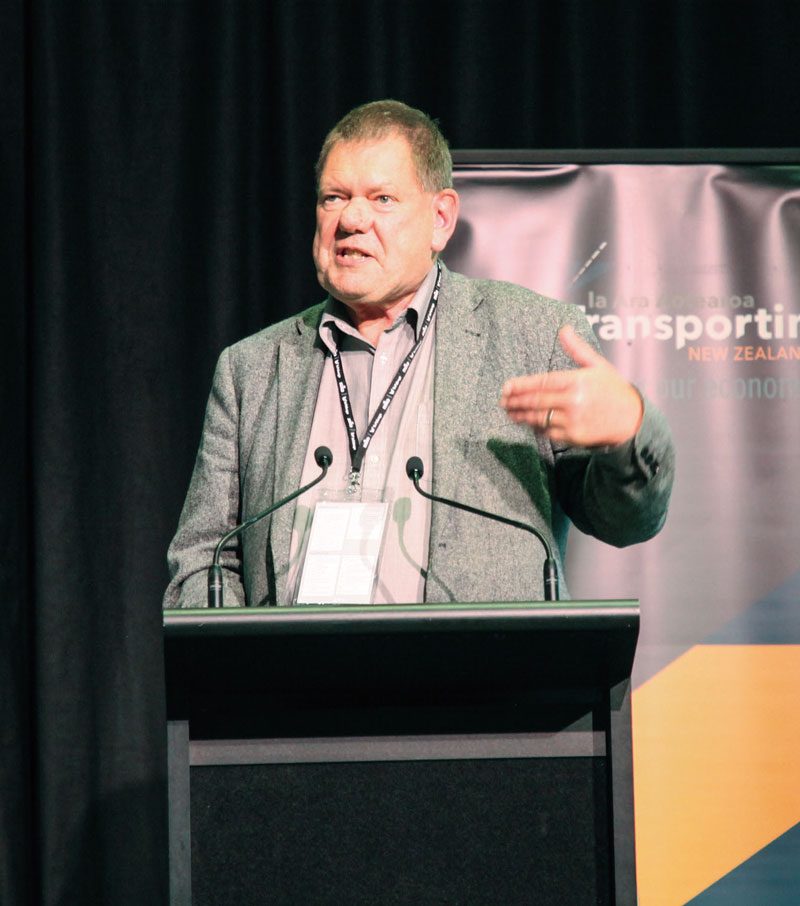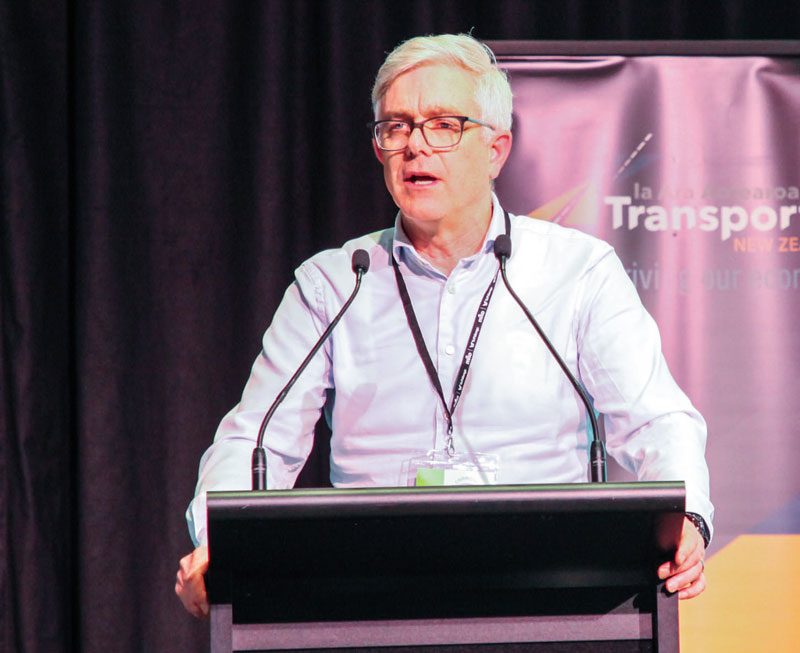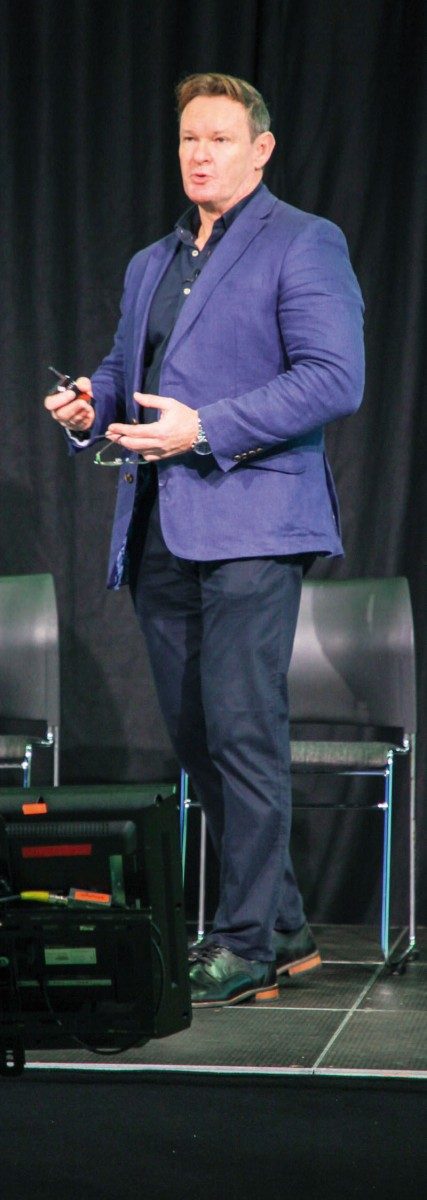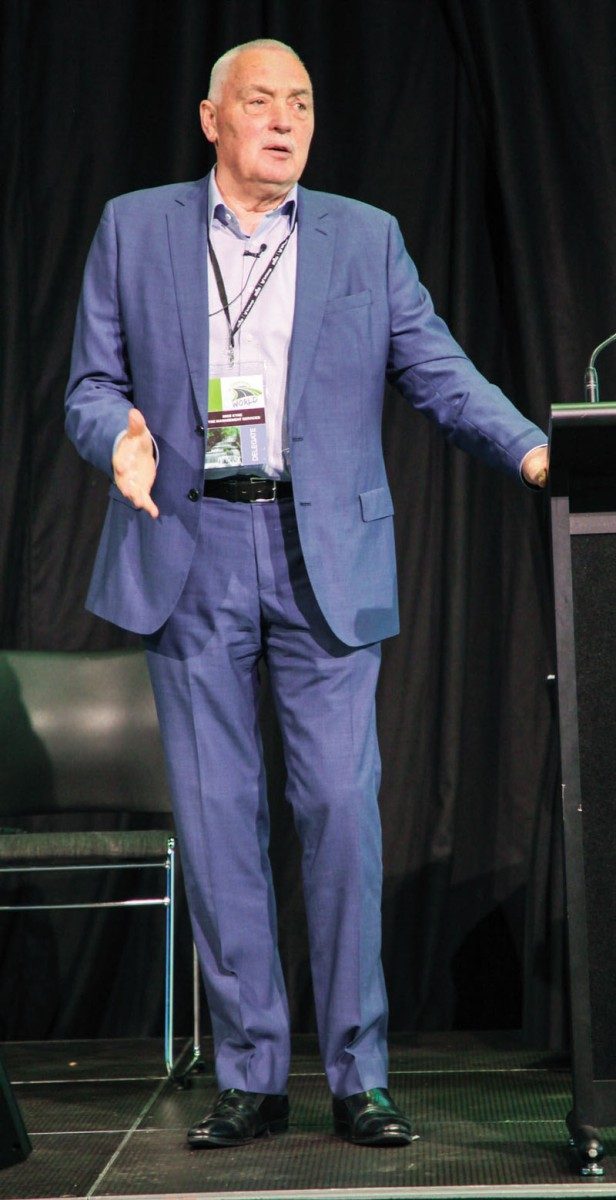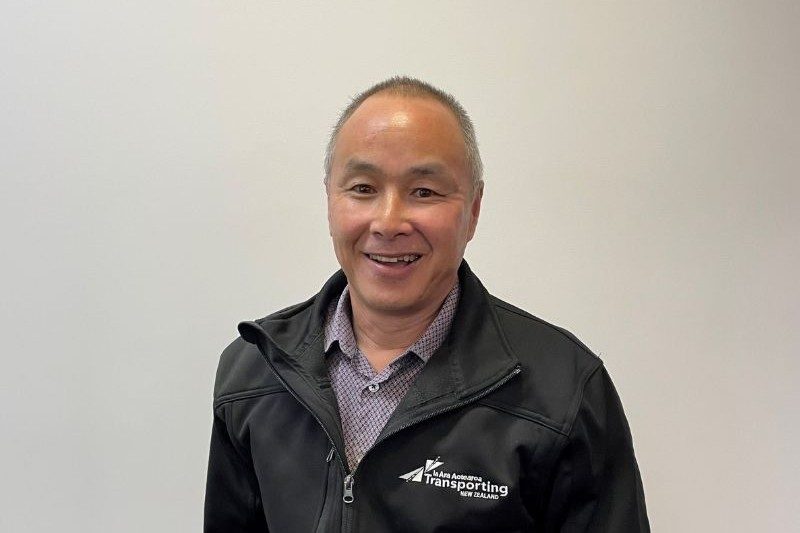October 2023: A changing world conference 2023

In last month’s wrap-up of the Transporting New Zealand conference, we looked at new ways of monitoring and measuring compliance and fatigue. In this final report, we get expert opinions on managing staff and the best ways to navigate employment law and ongoing labour issues.
Paul Mackay
Business New Zealand
Paul Mackay, manager of employment relations policy at Business New Zealand, gave an update on New Zealand labour issues and changes to legislation.
He said much was going on in the transport sector, making employment more difficult. “The transport industry is made up of many owner-operators who are involved in the logistics chains, but they’re also in business for themselves, which is kind of a bit different from the normal employment model where you’ve got one business with a lot of employees and a management structure.”
Review of contracting
“Then there’s the review of contracting, and who is an employee and who is a contractor. After the election, there is likely to be some more work around clarifying these definitions to make it easier for you to use, rather than make it harder for you, in your business,” he said.
Review of the Holidays Act
“Hundreds of millions of dollars’ worth of remediation have already been paid out, and probably nearly as much into consulting fees and lawyers’ fees in terms of getting help to do this remediation process. I participated in that, and came up with a series of recommendations that the government accepted in total, in fact, pretty much.”
While all political parties supported the idea of a review into the Holidays Act, Mackay said it had been a very slow, grinding process. “You have to make sure that the recommendations that have been made can actually be made to work in real life. And then the next challenge is to turn those findings into an actual law.”
Income insurance scheme
“Originally, to look after redundancies, every company had to provide on its books for a redundancy entitlement, up to 44 weeks’ worth of pay, for every employee. Business New Zealand campaigned the government to say we needed something different,” Mackay said.
“If people are made redundant, then the scheme picks you up, helps you get back on your feet and delivers you back to work. It’s highly simplistic in terms of its intent.”
Fair pay agreements
Mackay said fair pay agreements were a hot topic in most industries. “But the extent to which the transport industry would be caught by a claim at this stage is a little bit murky because, as an industry as a whole, it has very low union penetration and very low levels of employment versus self-employment.
“But there are within the other sectors, for instance, hospitality, supermarkets, groceries – the logistics processes involve a lot of this industry. And it’s possible that claims in those areas may, in fact, catch your people.
“So, it’s worthwhile talking through some of the basic elements of fair pay agreements and particularly about how some of the mechanics could be problematic for many.
“Our whole focus is on helping organisations and members understand the processes and getting through.”
Daniel Hummerdal
WorkSsafe
Daniel Hummerdal, head of innovation and partnerships at WorkSafe, said there was a “disturbingly negative” perception of health and safety. “I think it has to do something to do with the fact that we deal with death and serious injury and disaster, blood and gore, twisted metal and all the things that we don’t want to do,” he said.
“But that’s the reason why we want to have safety because we don’t want those things.”
Hummerdal said there was a lot of talk about triggers when it came to safety – risks, slips, lapses, mistakes, bad cultures, loss of situational awareness – and then on top of that, there are constraints, throwing a ‘behavioural lasso’ around people and operations to keep them within certain parameters – checklists, reminders, safety culture programmes.
“It’s a very limited approach to learning if you’re focused so heavily on bad outcomes to improve your systems,” Hummerdal said. “So, the question is, ‘What is happening in the rest of this continuum of outcomes?’”
Hummerdal said operators needed to start looking at why things go well.
“You don’t have to have an accident to go out and explore this. You don’t have to wait for negative events. This is happening every day, every hour of your business. And I personally find it’s a lot easier to learn from normal work than accidents,” he said.
“When there’s an accident, people get defensive. Blame gets involved. Who is responsible for this mess? Who’s gonna pay for it? When it’s normal work, especially if it’s good work, it’s positive work. People are proud.”
Hummerdal said there were lots of dimensions impacting performance.
Value and failure
Demand value: Demand is the work people have to do to meet the business’s purpose. Failure demand: The distractions that take people away from what they’re doing. “This is where people start doing workarounds because they have to overcome something in the business,” Hummerdal said. “All of a sudden, you run around doing lots of other things that are not at all part of the original plan.”
Goal conflicts
“You always have to be thorough and do things by the book to achieve quality. But you also have to be efficient,” said Hummerdal.
“You have to arrive on time but adapt to weather and traffic. You have to make sure that customers are happy. You have to be safe. You have to take care of the environment. You have to follow the rules. You have to listen to your boss. You have to listen to your colleagues.
“If you fit in when you’re a newcomer to the business – all these goals that you have to work towards, some of them will come into conflict.”
Edward Cox
Gibson Sheat Lawyers
There are calls for strengthening the chain of responsibility provisions in the Health and Safety at Work Act in line with a more effective regime, according to lawyer Edward Cox.
“I don’t think our existing chain of responsibility legislation works. It does need a change. Where does the enforcement stick usually land? It lands with you guys and your drivers,” he said.
“Why is it that the person who is in the probably weakest economic position in the chain – the driver, and then possibly after that, the operator – why is it that they get stung for the sins of those elsewhere in the supply chain, who, in my view are often the cause of the problem?
“If I had a dollar for every time my clients had called me and said, ‘Actually, we were pressured into taking this, or we were told we wouldn’t get paid to come back for the second load…’ I would be a much wealthier lawyer than I am now.”
“We have a chain of responsibility in legislation in New Zealand, and it basically says that anyone who causes or requires someone to break any of the core obligations – transport obligations, speed, work time, risk time, gross weight limits – that they can be liable. And there’s a fine of $25,000. Well, I’d have to say this would be one of the great lowlights of my legal career. It has never ever been used. There are no cases on it. No one has ever been prosecuted under these sections.
“That’s all we need to say to prove that this legislation doesn’t work. Can we fix it? The answer is yes. But do you try to rewrite the current Land Transport Act? Well, yes, frankly, it’s so out of date. But a modern bit of legislation would have overlapping duties for other parties in the supply chain.
“We need an economic model that investigates the true operational and economic causes of offending where that occurs up the chain and not simply targeting the young driver, or the operator who is in a poor economic position to push back and say, ‘No, we won’t take that load.’”
David Turner
Risk New Zealand
David Turner, chief executive at Risk New Zealand, said transport companies should make risk management a habit in the workplace.
“Let’s start making risk part of everything we do. It’s talking about it when we start our toolbox talks or when we are planning for the day,” he said.
He said that while businesses can have risk management plans in place, how were they measuring whether they were working?
“Some things can look great on paper, but they’re not actually delivering what we need. So, we need to keep checking that, adjusting it,” he said.
“Many plans are made and left… we’ll see how we are in six months or two years. But then, in that time, we’ve actually accumulated quite a bit of an issue, other risks because we haven’t kept on it.
“It’s simply monitoring it, making sure it’s working for us and not just a nice document sitting in the corner or on the shelf. It’s developing our management, our management skills, who is leading our staff, making sure from the tone from the top down that it’s getting through.
“We don’t need to bring out the templates. We don’t need to bring out four-hour discussions on risk. We need to start saying, ‘Do we understand it?’ Identify a risk, report it, let’s talk about it.”
Turner said businesses needed to leave their comfort zones when discussing risk management. “Our risk is ourselves in the comfort zone. Again, once we step out of that, start challenging what we do, our business and direction, we see it from a whole different angle.”
He said talking about risk was never going to be exciting.
“By just making it a habit, by getting it ingrained in people’s thinking, then they do start getting interested in it. Especially if we talk about how it’s going to benefit them, complement the organisation,” he said.
What’s blocking good risk management?
Turner said the industry’s approach to risk was hindering its progress. “It’s how we talk about it, maybe at the end of a board meeting for four minutes, and we never really get to it,” he said.
“It’s doing little things like bringing it to the front, saying, ‘What are our key risks within our strategy? Where are we going? Who do we want to be?’
“Every person is a risk manager at some level. As humans, we do risk management every day. We rely on what we are told. We have to get that instinct back.”
Mike Kyne
Kyne Management Services
Changes are required within the workplace to improve business, according to Mike Kyne, director at Kyne Management Services.
“We are still operating under a regime that talks about a 40-hour week, and we are trying to stretch that. If you look at the amount that is being paid to a lot of people for what they do, we just can’t sustain that.
“We need to change the way we are doing things to not only get more productivity, but to influence people and empower them to get more for the efforts they’re putting in.”
Reactive employer vs proactive employer
Kyne said there was a lot of frustration when dealing with staff, but it was important to get it right from the start. “What’s important is when you’re taking somebody on, it’s not just somebody to drive a truck for you, they’re also going to be driving a vehicle that has your name on the driver’s door. They’re representing you. If you take a person and have an expectation that he knows nothing about and expect a different result, then you’re not going to get it.
“I’m a firm believer that if you do not empower the people you have working for you, and if you don’t value them within the business environment you’re putting them in, then don’t expect that they will work in your best interest.”
Kyne said many owner-operators had a huge passion and commitment for what they did but struggled when it came to managing staff.
“They know most of their clients, and they’re very proud of what they’ve achieved – starting with one truck, a mortgage and two kids 25 years ago. And then suddenly they’ve got 15, 20, 40 trucks, and the business has gotten too big and they’re struggling to run the people. They’re not struggling with running trucks – they know that backwards. But they’re struggling in managing people,” he said.
He said his advice for owner-operators was to show leadership. “We tend to manage reactively rather than proactively. And young people won’t put up with that. So, a lot of the employment disputes and personal grievances that I deal with are people feeling unaligned.
“What you’ve gotta do is turn around the way that you manage people and put the onus of responsibility back on the person who’s being employed by you to do the work. And a lot of that comes down to how you talk to them.”
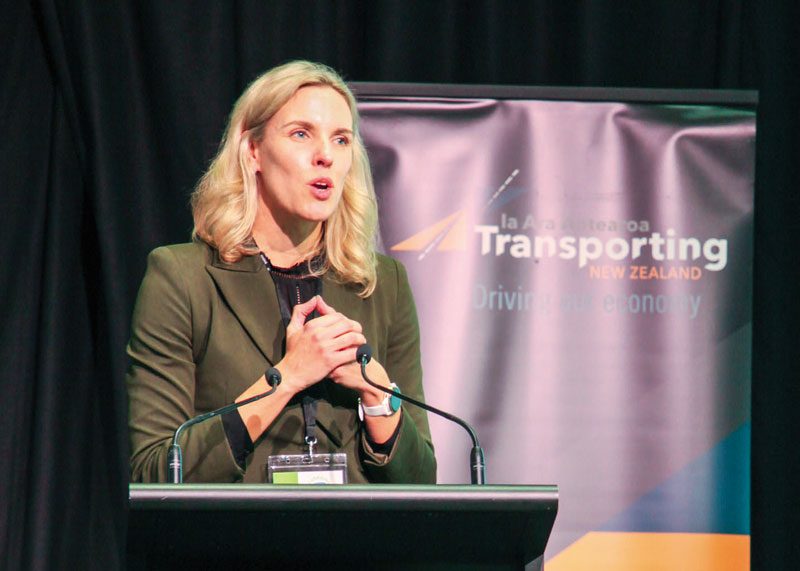
Covid impact on logistics
Hanga-Aro-Rau Workforce Development Council is the skilled-standard-setting body for the road transport industry, as well as the manufacturing and engineering border logistics sectors.
Deputy chief executive Samantha McNaughton said that while it was pretty obvious what Covid-19 did to many industries, the increasing skills and labour gap was confronting the logistics sector most.
“It has been decades that we have been talking about the skills shortage. It has been decades that we have been talking about the ageing workforce. But what Covid did is compounded it even further, and the skills gap and the labour gap is accelerating at quite a rapid rate,” she said.
“We have this really intense skills and labour shortage that has been coming at us for some time. But Covid added to those challenges.”
So, what are the options available to the industry regarding the logistics sector?
“Covid has taught us that we’ve had an over-reliance on migration. If we’ve needed to find skills or labour in the past, we’ve looked outside first and brought those skills and labour inside,” McNaughton said.
“And so Covid was possibly a bit of a jolt, a bit of a wake-up call, that we need to be looking differently at our domestic labour market and workforce as well.
“I’m absolutely pro-migration, being part of whatever solutions we need to grow, develop, sustain and maintain our workforce, but it can’t be the only solution,” she said.
Covid also enabled some employers to think differently about the technology that they were using. “For some businesses, for some components of the logistics sector, this involved quite rapid transformation, which had a really cool added benefit because all of a sudden there was a market of people that didn’t previously come into the logistics industry because of the quite manual work, but suddenly became quite attracted to it because of the technologies,” McNaughton said.
“Technology does have a huge part to play in changing the profile of the workforce, but also attracting different and new people into it.”
McNaughton said that while many operators had embedded technology into their day-to-day operations, they knew that when they replaced technology, it didn’t necessarily replace the people.
“It changes the type of skills those people need. All of a sudden, you’re creating new pathways – educational pathways and career pathways that didn’t previously exist because of the advent of technology,” she said.
“Creating a culture of ongoing learning and development, and credentialing through micro-credentials or other qualifications, adds to creating and retaining people within an industry and offers them multiple career pathways and opportunities.”


